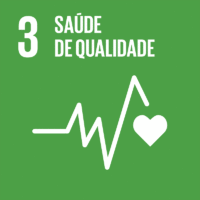Ciência_Iscte
Publicações
Descrição Detalhada da Publicação
Título Revista
Psychophysiology
Ano (publicação definitiva)
2020
Língua
Inglês
País
Estados Unidos da América
Mais Informação
Web of Science®
Scopus
Google Scholar
Esta publicação não está indexada no Overton
Abstract/Resumo
Situations involving increased closeness or exceptional kindness are often labeled as moving or touching and individuals often report bodily symptoms, including tears, goosebumps and warmth in the body. Recently, the kama muta framework has been proposed as a cross-cultural conceptualization of these experiences. Prior research on kama muta has mostly relied on subjective reports. Thus, our main goal of the present project was to examine the pattern of physiological responses to kama muta inducing videos and compare it to the patterns for the similar, though distinct emotions of sadness and awe. One hundred forty-four Portuguese and Norwegian participants were individually exposed to all three emotion conditions. Several psychophysiological indexes of the autonomic nervous system were collected continuously during exposure, including cardiovascular, respiratory, and electrodermal activity, facial EMG, skin temperature, as well as piloerection and lachrymation using cameras. Overall, the results partly replicated previous findings on being moved experiences and self-report studies. Strong self-reported experiences of kama muta were associated with increased phasic skin conductance, skin temperature, piloerection, and zygomaticus activity, while they were associated with reduced heart rate, respiration rate, and tonic skin conductance. The physiological profile of kama muta was successfully distinguished from sadness and awe, partly corroborating self-report evidence. We obtained no clear evidence of a kama muta association with the occurrence of lachrymation or heart rate variability. Our findings provide a systematic overview of psychophysiological response to experiences of kama muta, and help to inform future research on this emotion and positive emotions in general.
Agradecimentos/Acknowledgements
--
Palavras-chave
ANS,Being moved,Goosebumps,Psychophysiology,Tears,Kama Muta
Classificação Fields of Science and Technology
- Psicologia - Ciências Sociais
Registos de financiamentos
| Referência de financiamento | Entidade Financiadora |
|---|---|
| PTDC/CCIINF/29234/2017 | Fundação para a Ciência e a Tecnologia |
Projetos Relacionados
Esta publicação é um output do(s) seguinte(s) projeto(s):
Contribuições para os Objetivos do Desenvolvimento Sustentável das Nações Unidas
Com o objetivo de aumentar a investigação direcionada para o cumprimento dos Objetivos do Desenvolvimento Sustentável para 2030 das Nações Unidas, é disponibilizada no Ciência_Iscte a possibilidade de associação, quando aplicável, dos artigos científicos aos Objetivos do Desenvolvimento Sustentável. Estes são os Objetivos do Desenvolvimento Sustentável identificados pelo(s) autor(es) para esta publicação. Para uma informação detalhada dos Objetivos do Desenvolvimento Sustentável, clique aqui.

 English
English


